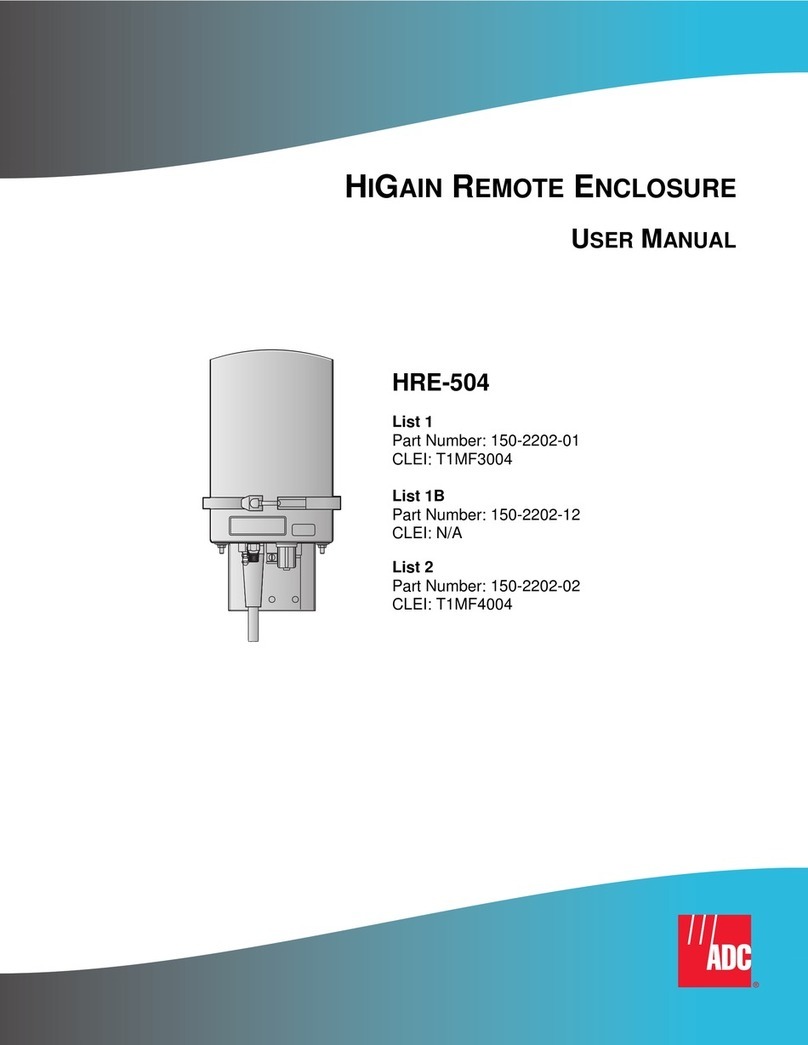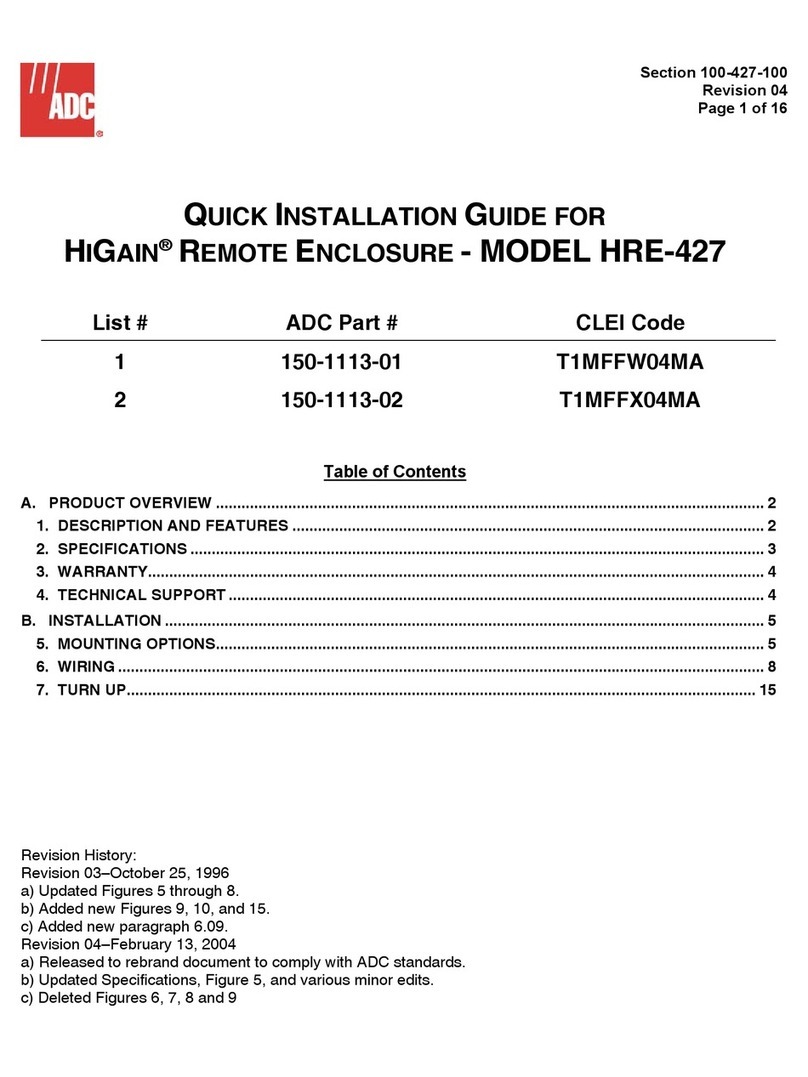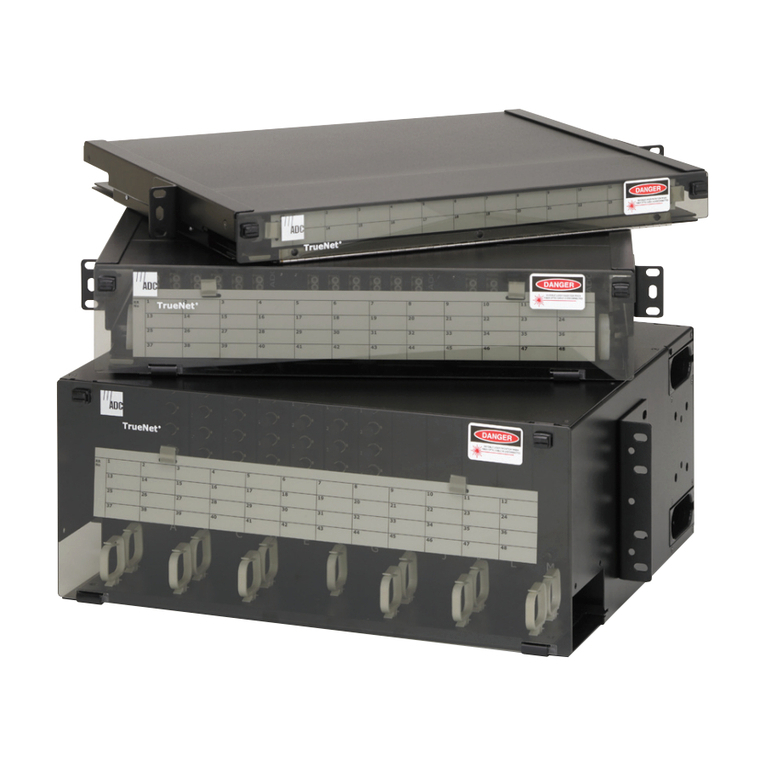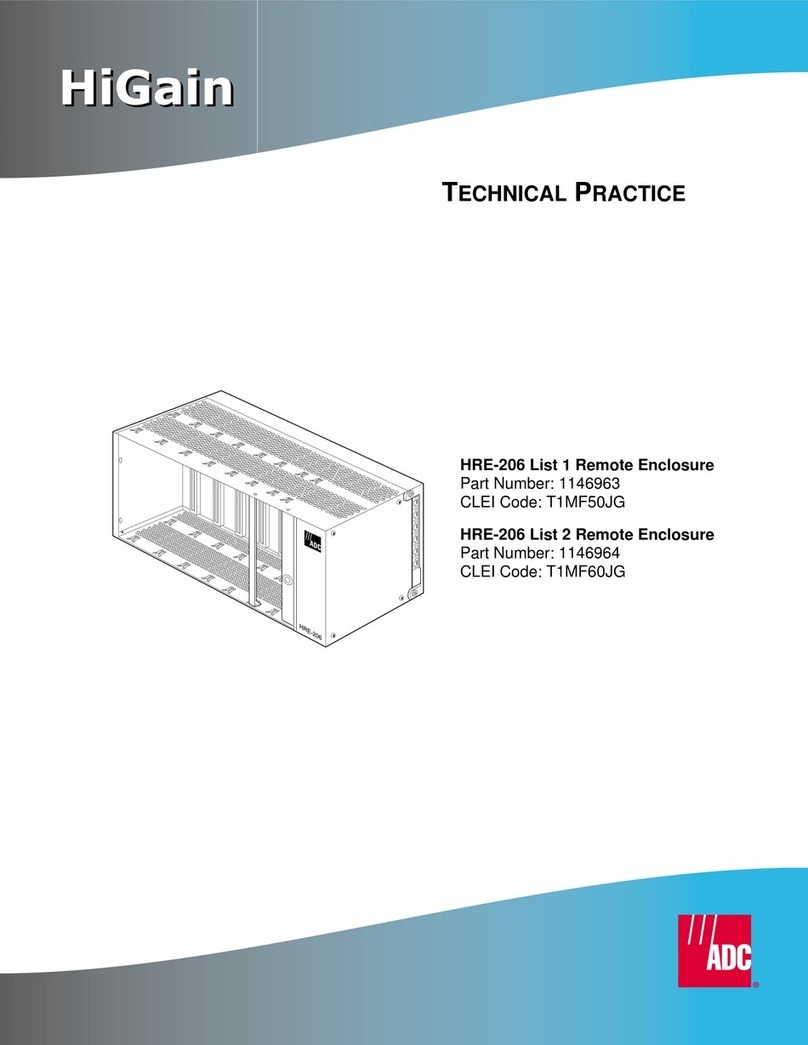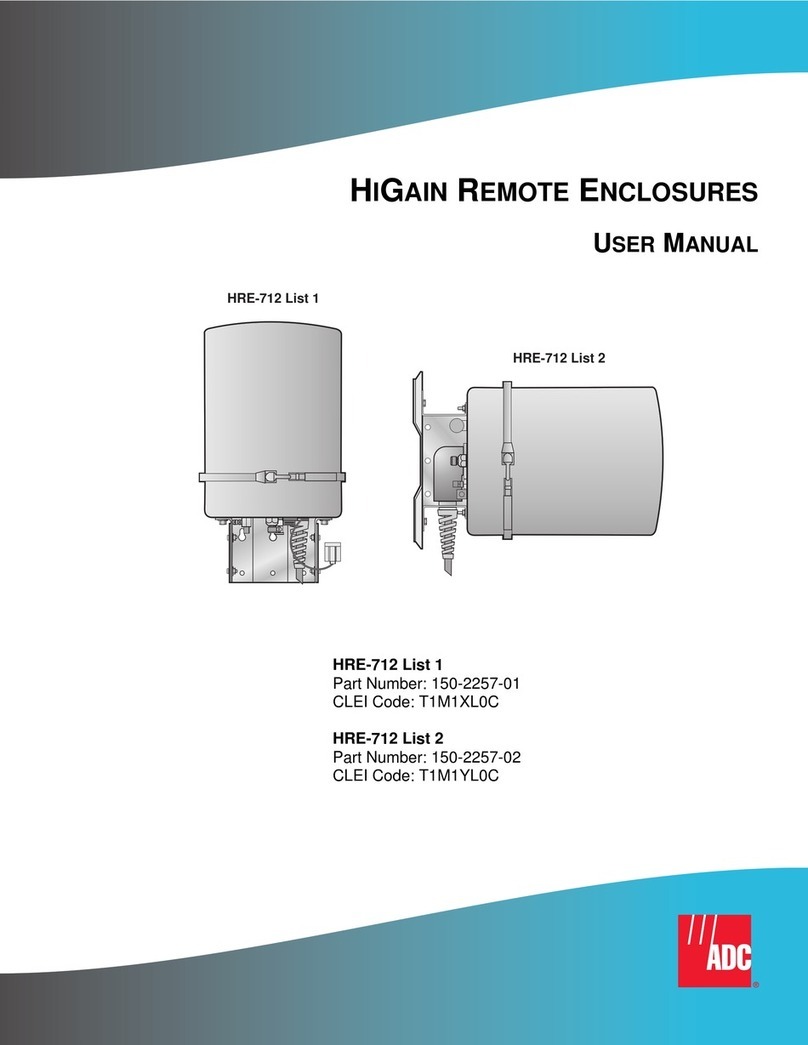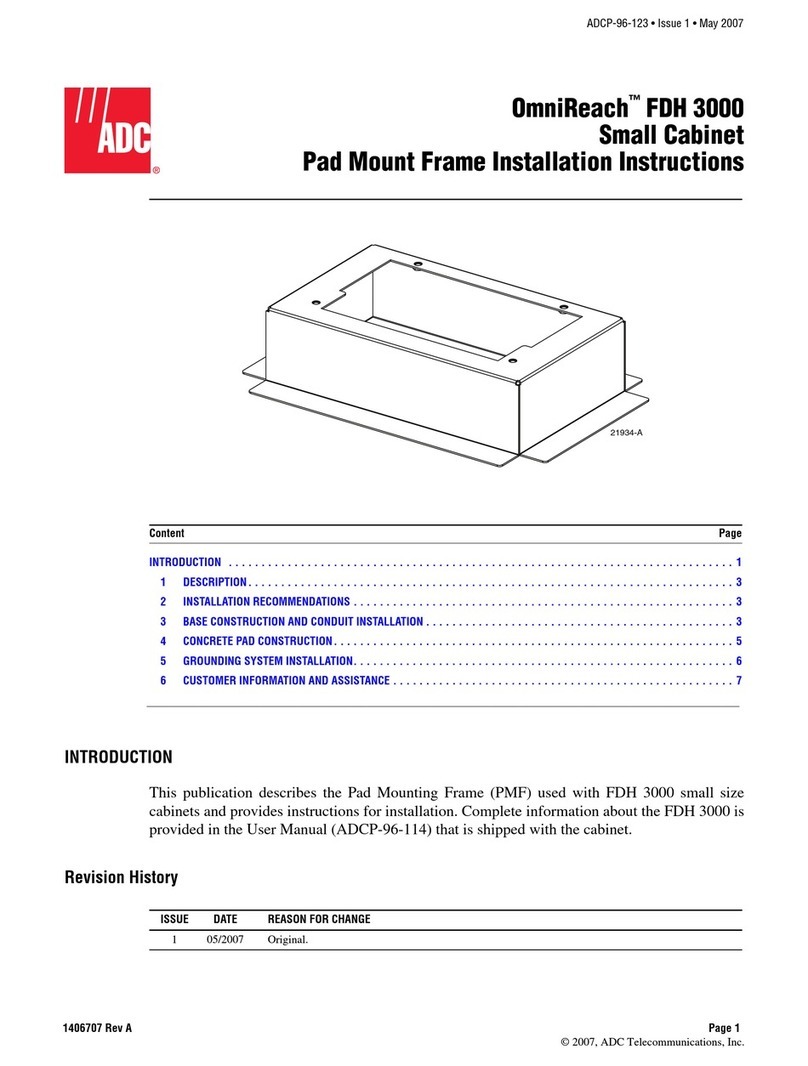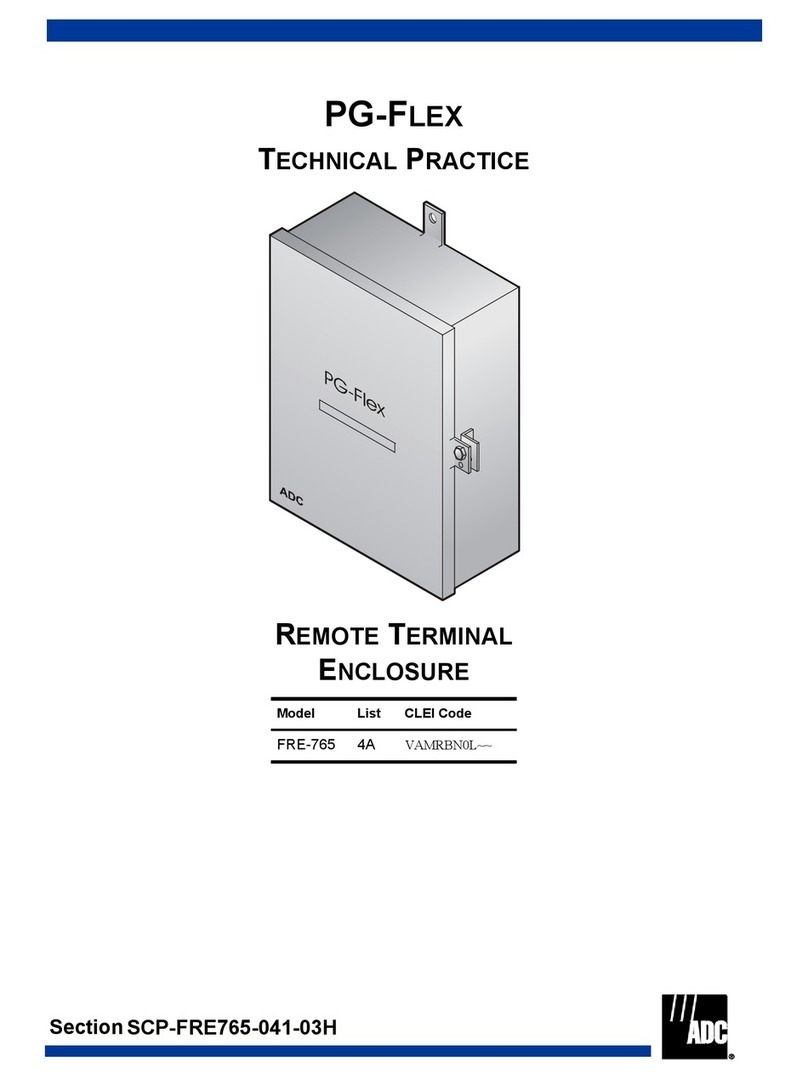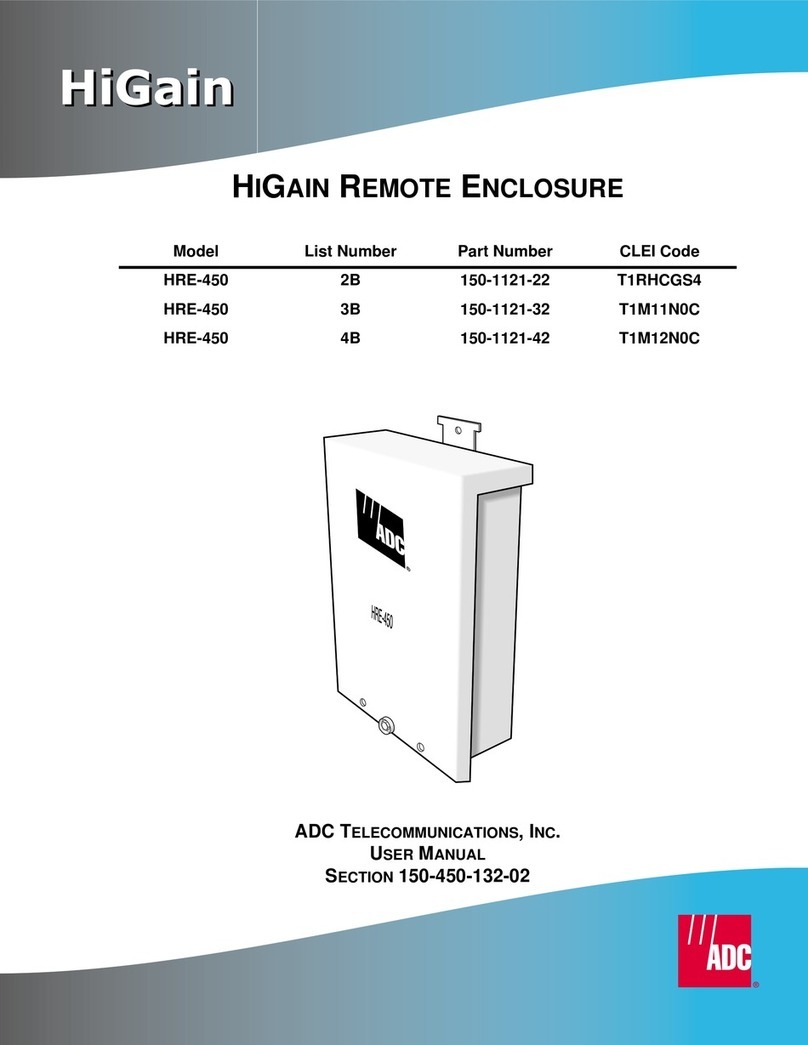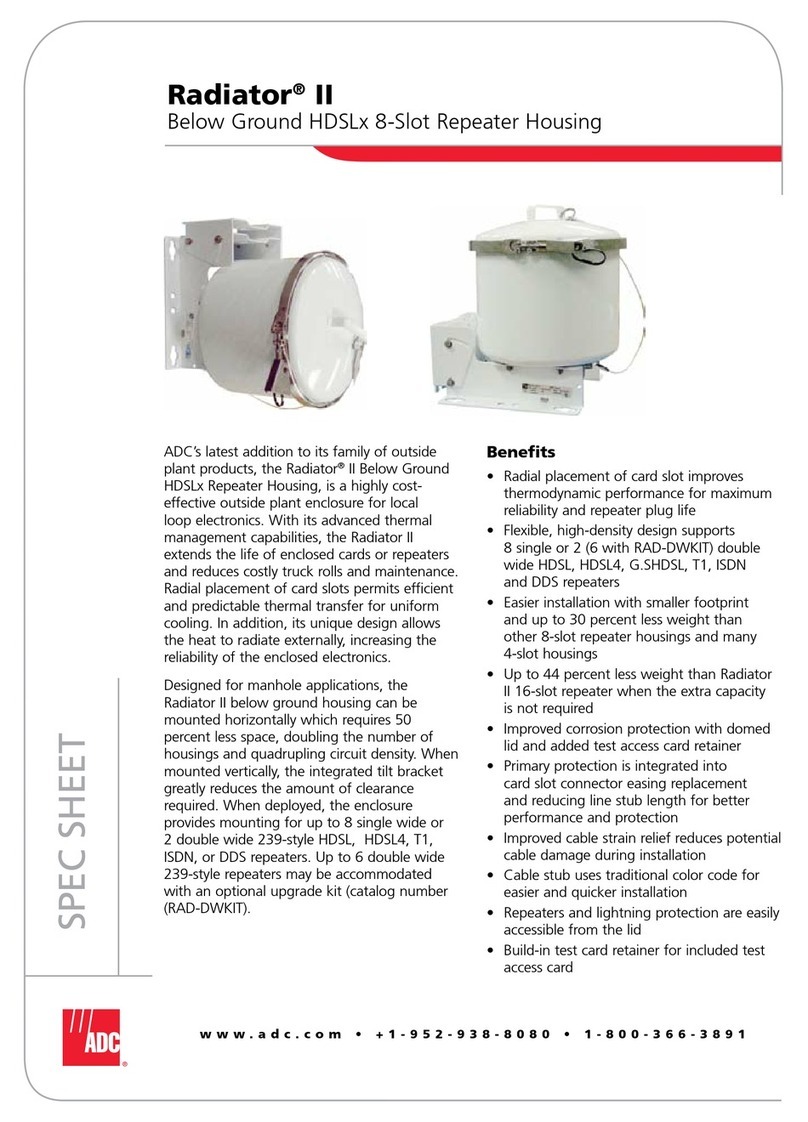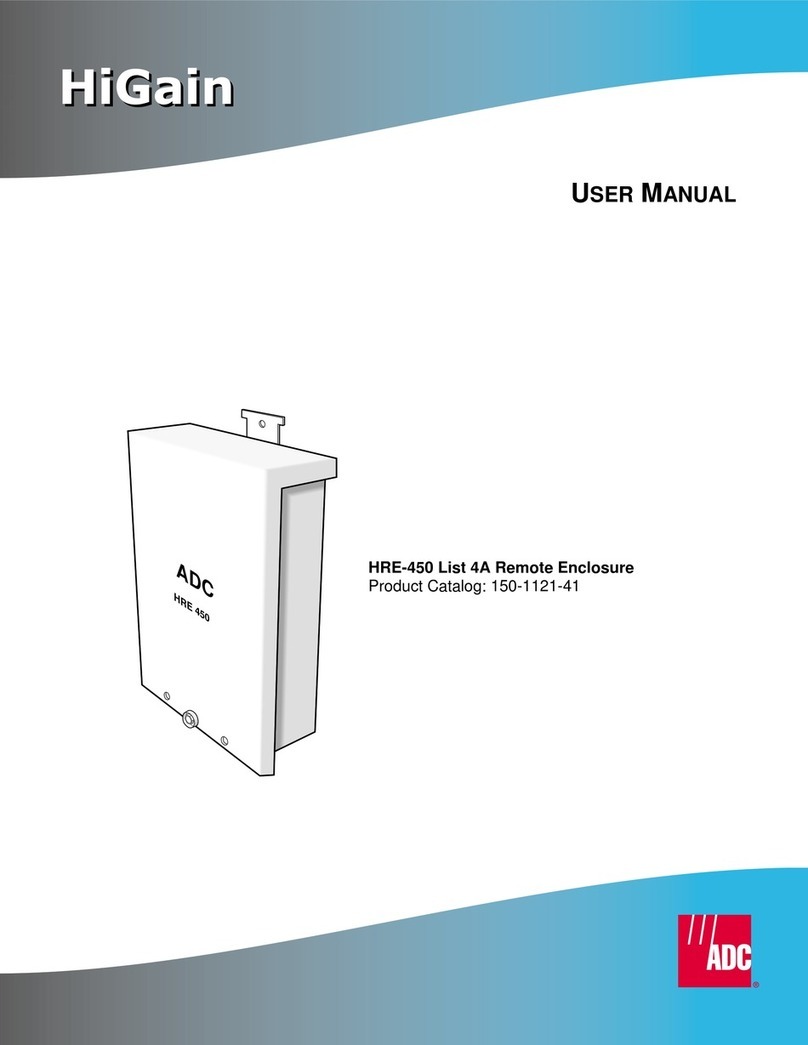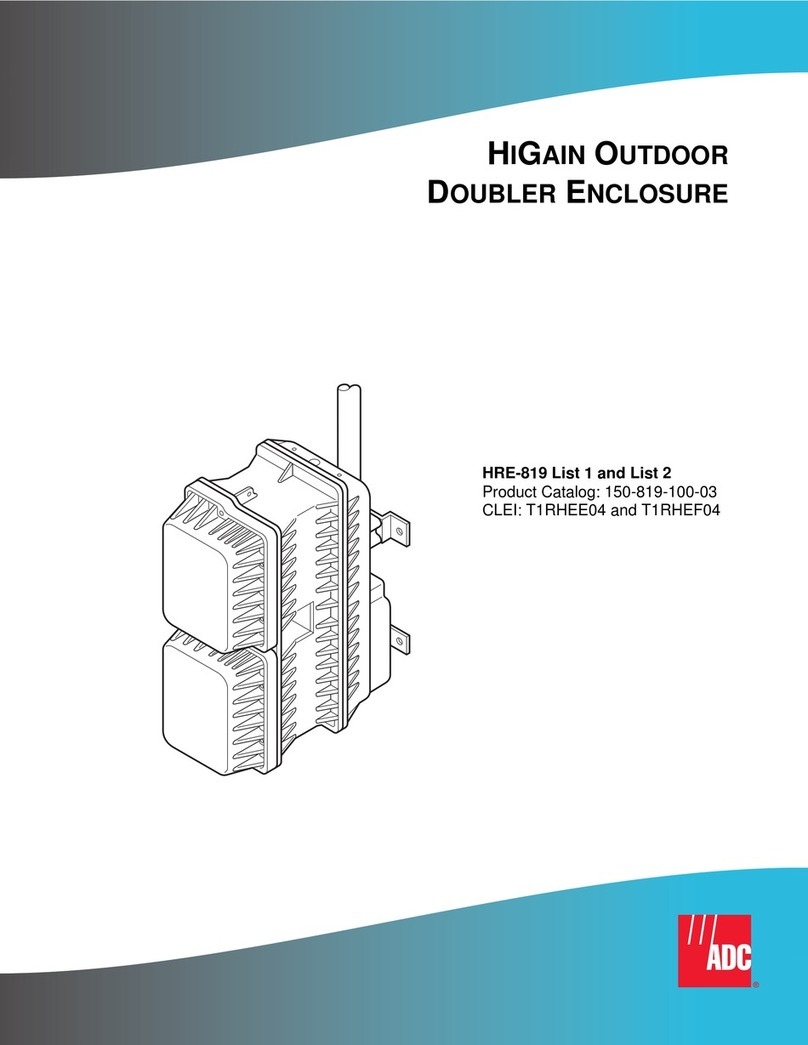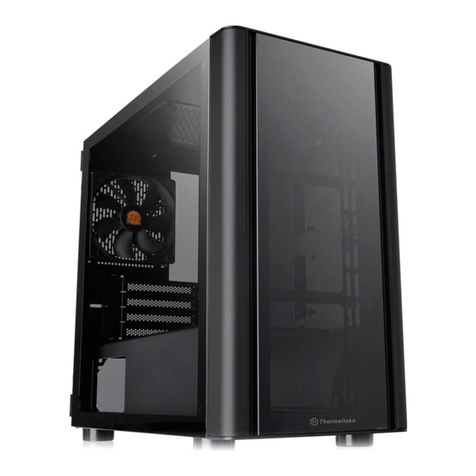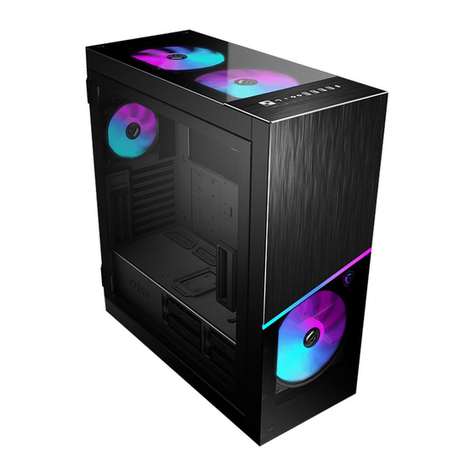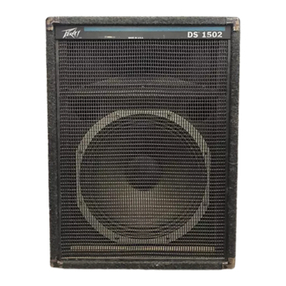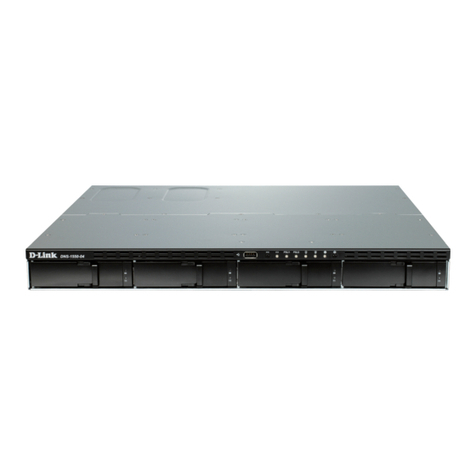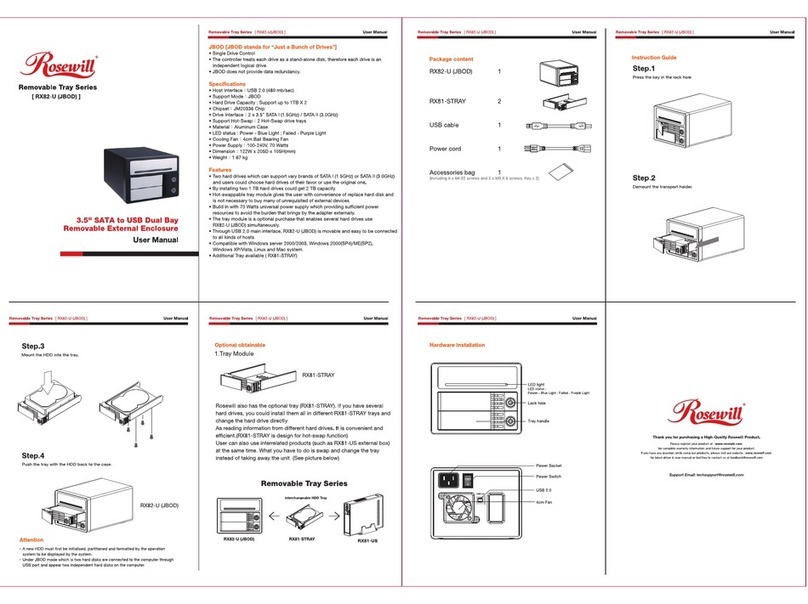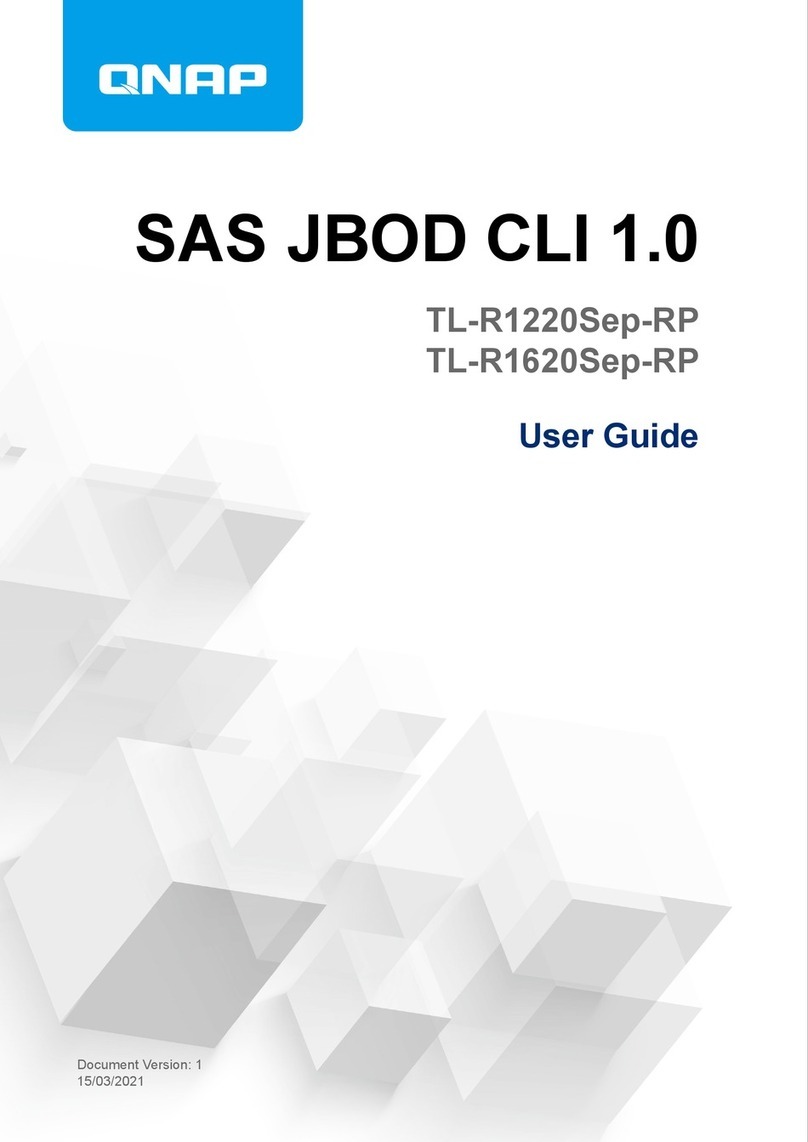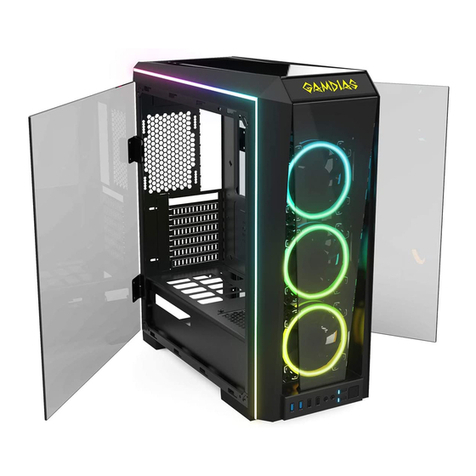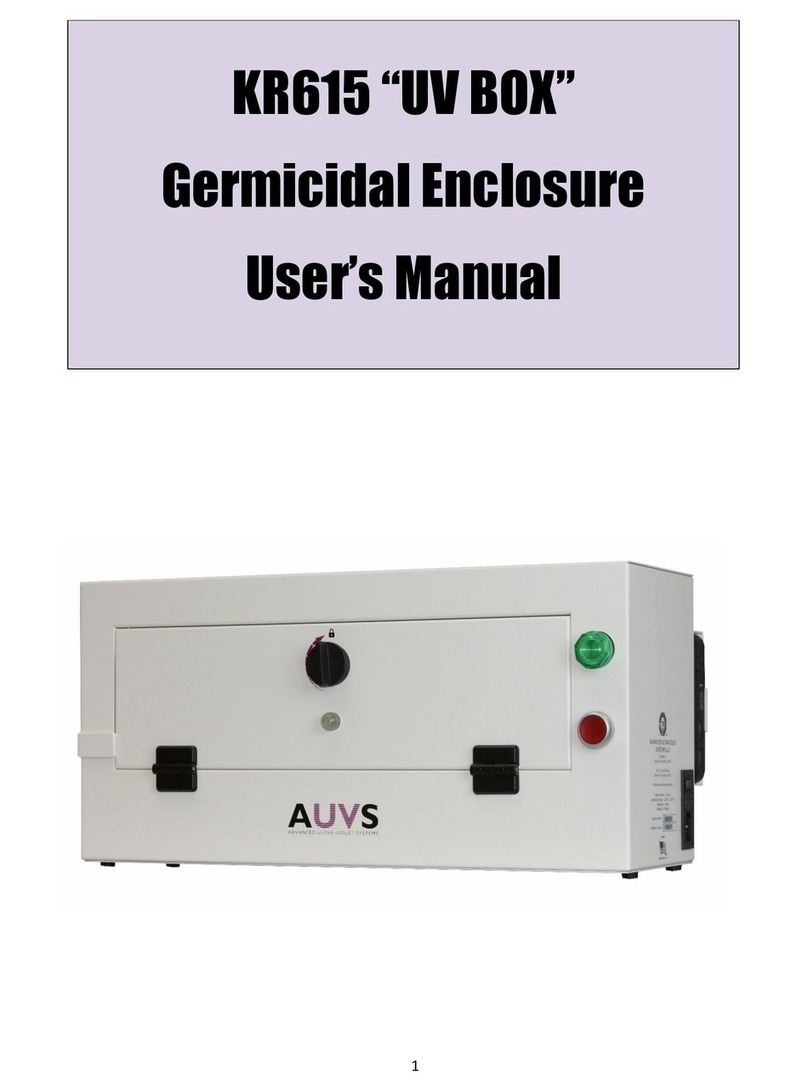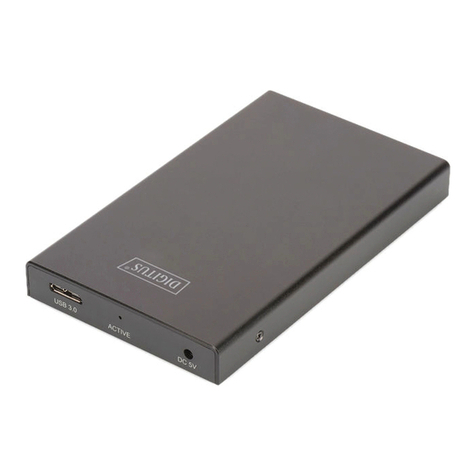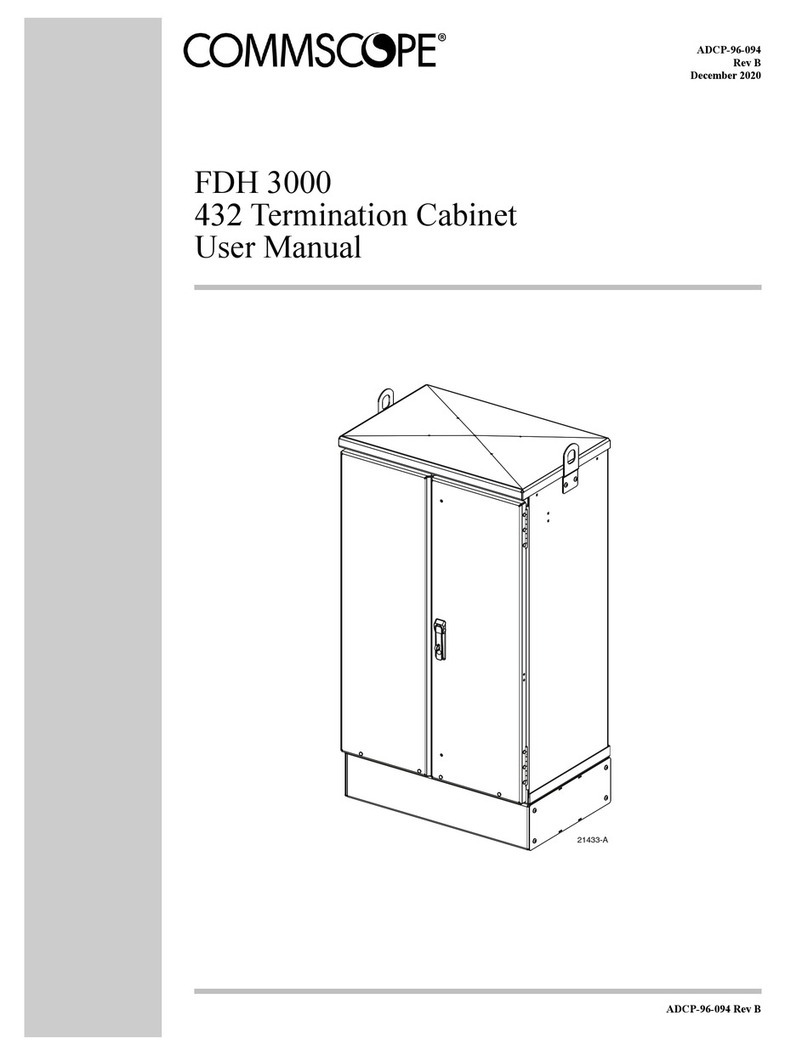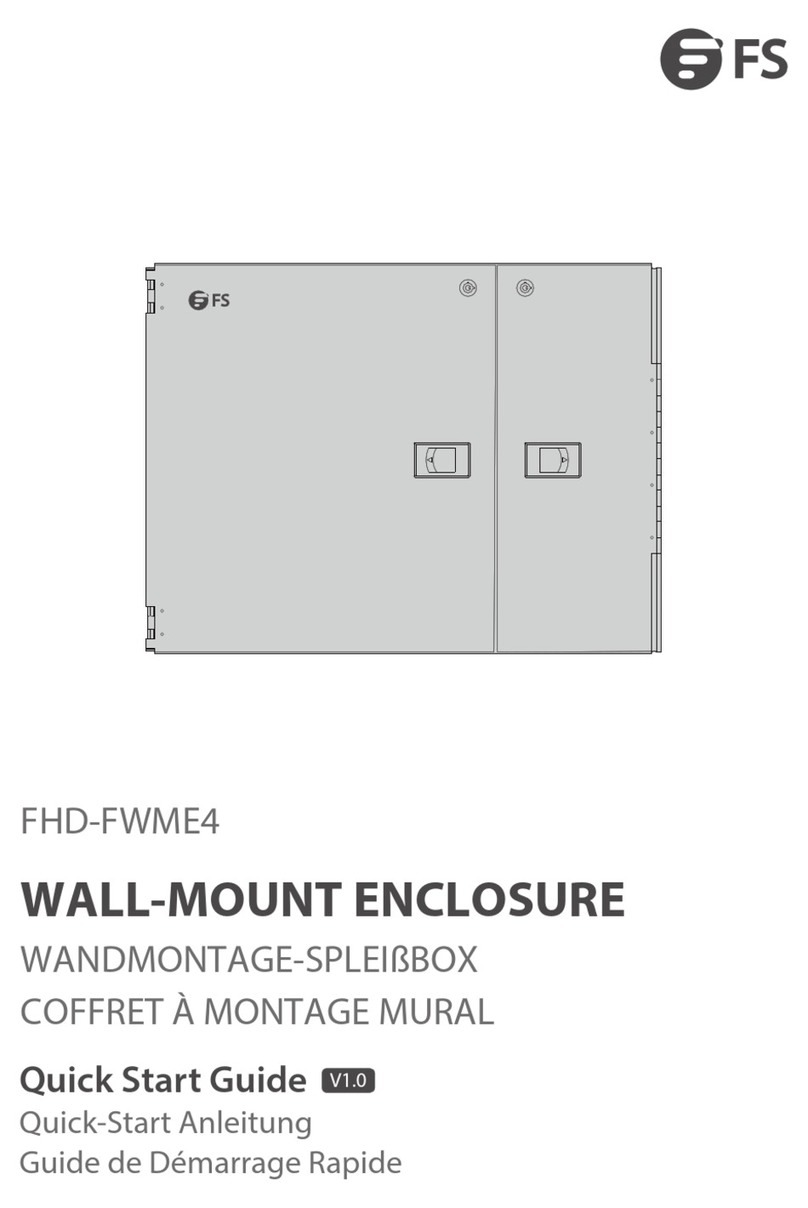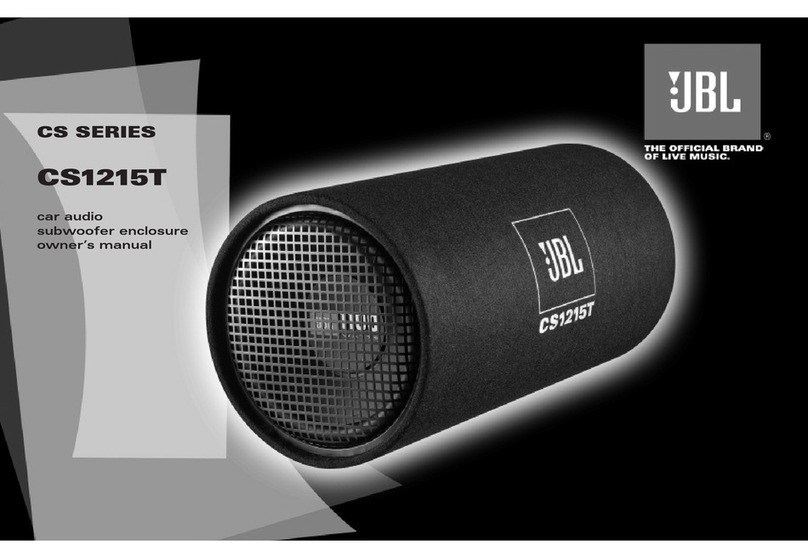
150-454-111-06 Table of Contents
HRE-454 February 25, 2000 v
TABLE OF CONTENTS
Overview ____________________________________________________________________________ 1
Features..............................................................................................................................................1
Applications .......................................................................................................................................1
HRE-454 List 3 and List 4...................................................................................................2
HRE-454 List 5 and List 6...................................................................................................2
Doubler, Line, and Remote Unit .........................................................................................3
Doubler Applications...........................................................................................................4
Functional Description.......................................................................................................................4
Gel-filled Stub Units............................................................................................................4
Air-filled Stub Units............................................................................................................5
Pressurized Applications....................................................................................................................6
Installation___________________________________________________________________________ 8
Unpacking and Inspecting Your Shipment........................................................................................8
Mounting............................................................................................................................................9
Small Pole or Pedestal Mounting ........................................................................................9
Large Pole or Pedestal Mounting ......................................................................................10
Flat Surface Mounting.......................................................................................................11
Rack Mounting ..................................................................................................................12
Grounding ........................................................................................................................................13
Grounding a Pole Mounted Enclosure...............................................................................13
Grounding a Flat Surface Mounted Enclosure ..................................................................15
Slot Chassis Ground Connections....................................................................................................16
Detaching the Dome from the Baseplate .........................................................................................17
Opening the HRE-454 Enclosure.....................................................................................................18
Closing the HRE-454 Enclosure......................................................................................................18
Pivoting the Enclosure.....................................................................................................................19
HiGain Test Card (HTC-400) Installation.......................................................................................19
Circuit Testing...................................................................................................................20
Test Connections ...............................................................................................................21
Test Capabilities ................................................................................................................21
Appendix A - Specifications____________________________________________________________ 23
Appendix B - Technical Reference ______________________________________________________ 24
CLEI Code and P1 Labels................................................................................................................24
HRE-454 Enclosure Information.....................................................................................................25
Stainless Steel Dome .........................................................................................................25
Card Cage ..........................................................................................................................25

